The “Paranormal” Is Normal
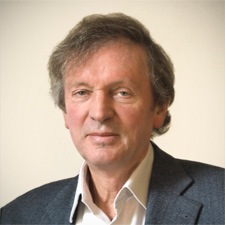
“Psychic phenomena are normal in the sense that they are common: for example, most people have made other people turn round by staring at them, or had seemingly telepathic experience with telephone calls . . .. But because these experiences do not fit in with the materialist mind-in-brain theory, they are classified as paranormal, literally meaning ‘beyond the normal’. In this sense, ‘normal’ is defined not by what actually happens, but by the assumptions of materialists… If psi phenomena exist, which I think they do, they are normal, not paranormal; natural, not supernatural. They are part of human nature and animal nature, and they can be investigated scientifically.”
–Rupert Sheldrake (English Biologist, Researcher and Author, 1942-)

“Science Set Free: 10 Paths to New Discovery” (Rupert Sheldrake)
Your Latent Powers
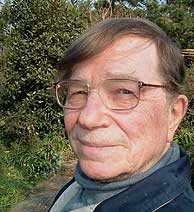
“Faculty X is simply that latent power in human beings possess to reach beyond the present. After all, we know perfectly well that the past is as real as the present, and that New York and Singapore and Lhasa and Stepney Green are all as real as the place I happen to be in at the moment. Yet my senses do not agree. They assure me that this place, here and now, is far more real than any other place or any other time. Only in certain moments of great inner intensity do I know this to be a lie. Faculty X is a sense of reality, the reality of other places and other times, and it is the possession of it — fragmentary and uncertain though it is — that distinguishes man from all other animals.”
–Colin Wilson (English Novelist and Writer on Philosophy, Sociology and the Occult, 1931-)
A Different Reality
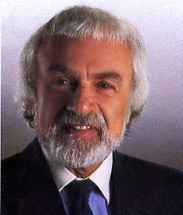
An extraordinarily interesting piece from an interview in Psychology Today in 1990:
“It isn’t that the world of appearances is wrong; it isn’t that there aren’t objects out there, at one level of reality. It’s that if you penetrate through and look at the universe with a holographic system, you arrive at a different view, a different reality. And that other reality can explain things that have hitherto remained inexplicable scientifically: paranormal phenomena, synchronicities, the apparently meaningful coincidence of events.”
–Karl Pribram (Austrian-born American Neuroscientist, 1919-)
Expanding Our Potential
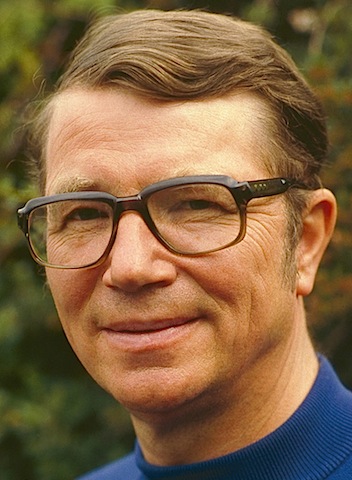
“What is necessary at this stage in our evolution is not a ‘return’ to the psychic powers of our ancestors, but an expansion of our own potential powers, based upon the certain knowledge that such powers exist.”
–Colin Wilson (English Novelist and Writer on Philosophy, Sociology and the Occult, 1931-)

“Alien Dawn: A Classic Investigation into the Contact Experience” (Colin Wilson)
Ian Stevenson R.I.P.
I just heard that the Candian-born psychiatrist and researcher Ian Stevenson passed away last month at the age of 88.
You may not have heard of him, but he spent a lifetime on a peculiar area of academic research: he was the world’s foremost authority on the study of reincarnation. He was interested in children who claim to remember previous lives, near-death experiences,
apparitions (death-bed visions), the mind-brain problem, and survival
of the human personality after death.
Stevenson was always careful and cautious about his claims. He wrote his first paper on reincarnation in 1960 and went on to conduct additional field research about reincarnation in Africa, Alaska, British Columbia, Burma, South America, Lebanon, Turkey,
and many other places. The children studied would typically start recalling
their past life story between the ages of two and four, yet seem to
have forgotten it by seven or eight. There were frequent mentions of
having died a violent death, and apparently clear memories of the mode
of death. He gathered testimonies as well as medical records of
information on birthmarks, birth defects, and other physical evidence
for reincarnation.
Stevenson published over 200 articles and several books, but they were almost exclusively for the academic and scientific community, so they can be heavy going for a non-speciaist. His research database contains over 3,000 cases that
provide evidence suggestive of reincarnation, though he himself was
always careful to refer to them as "cases suggestive of reincarnation"
or "cases of the reincarnation type."
I first heard about his work as a young student in the early 1970s, and I subsequently read most of his books and papers. They make fascinating reading and it is difficult not to be persuaded that either these are genuine cases of reincarnation, or else there is some unknown non-physical method by which young children can pick up information about people and events about which they should know nothing.
Stevenson’s work continues with a new generation of researchers. It is is important to think about the incredible implications if even one of these cases is genuine.
And it bears repeating that there is not one case, but over 3,000, all meticulously documented.
One of his papers is available for free download, and if you are interested in the topic of survival, I also recommend the Survival Research Network and the International Association for Near-Death Studies.
Diseases of Discipleship
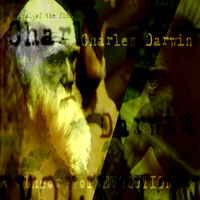
You will not find them listed on WebMD, but “Diseases of Discipleship” are nonetheless very real. I have mentioned them in Healing Meaning and Purpose and also here. They are the result of sudden access to spiritual energies that can upset the balance of the body, mind and spirit. The great value of having a teacher is to help you balance and work with these energies without being harmed by them.
Several of my own teachers talked a lot about these diseases of discipleship, but I would particularly like to single out Douglas Baker and the writings of Roberto Assagioli, Del Pe, Torkom Saraydarian, Stan Grof and Alice Bailey.
I have also had a great deal of experience with people undergoing spiritual crises. Many have been referred to me by priests, clergy and intuitives, because many of the individuals thought that they were “going crazy,” and some had ben given psychiatric diagnoses. That extensive experience has helped me and some of my students to describe some of the “symptoms” in more detail.
Roberto Assagioli identified five critical points where problems may arise:
- Just before spiritual awakening begins
- Crises caused by spiritual awakening
- Reactions to spiritual awakening
- Phases of the process of transmutation
- The “Dark Night of the Soul”
Today I am just going to focus on the crises caused by spiritual awakening, because a great many people are experiencing them at the moment.
Here are some of the more common signs and symptoms include:
- Visual disturbances
- Extreme sensitivity to light and sound
- Paradoxically they often also find a raised pain threshold
- Increased metabolic rate, which may cause a slight increase in body temperature and a little weight loss
- Variable libido: some people lose all interest in sex, but most experience an increase in sexual desire, which can take them and any partners by surprise
- Disturbances in circadian rhythms
- Disturbances in thyroid and adrenal function: the thyroid often becomes slightly – or sometimes more than slightly – overactive and the adrenal glands slightly less responsive to stimulation
- Hypoglycemia
- Hypertension
- Chronic fatigue
- Anxiety and a feeling of “butterflies” in the region of the solar plexus
- Inexplicable sensations roughly corresponding to the channels identified in Chinese and Ayurvedic medicine
- Irregular breathing patterns, usually hyperventilation
- Something that feels like electricity under the tongue and under the palate
- Crying for no readily apparent reason
- As peoples’ consciousness rises, it is quite common to experience “Synesthesia” in which senses overlap: people may taste sounds, feel colors and “hear and see” with different parts of the body
- Psychic abilities often begin to appear: clairvoyance, clairaudience, spiritual intuition and the ability to heal
- Many begin to feel and see their own Inner Light and the Inner Light of other people
Not everyone gets all of these symptoms and they may come and go for a while. Some people don’t get any at all, but they are unusual. There are two books by Hazel Courteney that detail some of what happened to her, and they are well worth a read.
It is important to emphasize that all of these signs and symptoms can also be caused by illnesses. So although most people who are going through all this want to avoid doctors, it is a very good idea to ensure that everything is okay. I once saw someone who had been told that she was having a kundalini experience, even though she did not have any of the usual features. She became very unwell, but felt much better when an insulin-producing tumor was removed from her pancreas.
The most important thing is to help people remain grounded. I have seen many people become extremely grandiose and even fanatical after going through a rapid spiritual awakening. It is also important to ensure that any physical symptoms – such as thyroid or blood pressure problems – do not continue unchecked.
Helping people who are going through spiritual change or crisis needs the help of a person or persons who understand physical and psychological problems, as well as being some way along the path of spiritual development. By “crisis” I do not mean crisis of faith, but a critical turning point in an individual’s personal development.
There are plenty of good ways of grounding using some physical, psychological and subtle system exercises. I have dozens of excellent techniques that I can publish if you are interested. Sometimes it is also a good idea to eat some heavy food.
It can be very helpful to get away form other people for a while. This doesn’t mean becoming a monk or nun, but just to avoid a bad case of people poisoning. In their overly sensitive state they can pick up a lot of negative things from the people around them. I have known a good many people who would begin to experience all the physical and psychological symptoms of the people around them.
Once we have confirmed that the person does not have all this as a result of thyroid disease or anxiety, it is essential to show them what is going on and the best way to approach and conceptualize it.
Next we help people to control some of the impulses that can otherwise swamp them. One of the many reasons for development of the sophisticated mind control techniques developed by Tibetan Buddhism was to help people watch their spiritual unfoldment without being overwhelmed by it.
We also try to help people to transmute psychological energies so that they can be used constructively.
Everybody is different, but in some people acupuncture, qigong, Reiki and homeopathy have all been helpful. Several of the flower essences can be very useful, in particular:
Vervain
Star Tulip
White Yarrow
Pink Yarrow
Every expert that I know in the field of spiritual development agrees with my observation that there are currently more people having major spiritual changes than ever before. It is essential for us all to know how to protect, support and birth them.
“To penetrate into the essence of all being and significance, and to release the fragrance of that inner attainment for the guidance and benefit of others, by expressing in the world of forms – truth, love, purity and beauty – this is the sole game that has any intrinsic and absolute worth. All other incidents and attainments can, in themselves, have no lasting importance.”
–Meher Baba (Indian Spiritual Teacher who, from July 1925 maintained Silence, 1894-1969)
“You knock at the door of Reality. You shake your thought wings, loosen your shoulders, and open.”
–Jalal al-Din Rumi (Afghan Sufi Poet, 1207-1273)
“Life is a series of awakenings.”
–Sri Swami Sivananda (Indian Physician and Spiritual Teacher, 1887-1963)
“What we usually call human evolution is the awakening of the Divine Nature within us.”
–“Peace Pilgrim” (a.k.a. Mildred Norman, American Peace Activist, 1908-1981)
Of Horses and Hearts
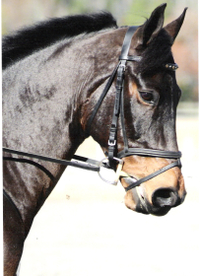
I live on a horse farm, so I see the interactions between horses and between horses and humans almost every day. Horses are extraordinarily sensitive creatures with their own sets of emotions and highly developed sense of propriety. They are also very good barometers for the emotional states of humans. We could not work out why one of the horses at another farm was consistently bratty with one particular rider, until we discovered that she was high on ecstasy. Her “energy” was a mess and it totally confused the horse.
On the other hand, horses are often used therapeutically with emotionally and mentally ill and handicapped children and adults. My old horse – Mr. Black – was a perfect therapy horse: nothing ever fazed him.
There is now some more research demonstrating one of the possible mechanisms by which horses may be able to pick up on a rider’s emotional states.
I have a couple of times mentioned some of the work being done at the Institute of HeartMath in California.
Some of their work is controversial, but most has been quite convincing.
I have for several years now been interested in the phenomenon of Heart Rate Variability (HRV). As the name implies, it is a measurement of the beat-to-beat variation in the heart’s rate. Alteration (primarily reductions) of HRV has been reported to be associated with various pathologic conditions like hypertension, hemorrhagic shock, and septic shock. It has found its role as a predictor of mortality after an acute myocardial infarction. It may also be disturbed in major depressive disorder.
I knew about it from the days that I worked at the National Heart Hospital in London, but Roger Callahan – the discover of Thought Field Therapy (TFT) – has been able to show that TFT is one of the few therapies that can normalize it. We also discussed it in the context of the vagal nerve and compassion.
From a pilot study by the Institute and Dr. Ellen Gehrke from Alliant University it appears that a horse’s heart rhythms reflect their emotional state and can respond to the emotional state of a nearby human. When in contact, a horse’s heart rate may mirror a human’s emotions, implying a close unspoken form of communication between the two.
The study took place at Dr. Gehrke’s ranch in San Diego, where electrocardiogram (ECG) recorders were placed on her and also on four of her horses. All five were monitored during a 24-hour period in which the horses were under a variety of normal conditions and activities such as eating, grooming or being alone. Measurements were also done while they were being ridden and accompanied by Dr. Gehrke.
The ECG recorders projected increased coherent HRV patterns for the horses during times of close, calm contact between them and Dr. Gehrke. Coherent HRV patterns have been shown to be the result of positive emotions and facilitate brain function.
Dr. Gehrke said, “Horses receive information from body language and give feedback. They don’t think very much, they feel. They are very emotional and honest. They also have a powerful impact on your sense of self and ability to lead.”
I don’t think that cardiac coherence is the whole story. They also respond to micro-movements – small movements of the legs, arms and trunk that are all but imperceptible to humans – and we have seen many of them sense events at long range. I travel a great deal and come home at odd times. But several witnesses saw Mr. Black start to become very excited 20-30 minutes before I would arrive home. In England, Rupert Sheldrake has amassed a considerable body of evidence to support those observations.
Nonetheless, this is very important research and I shall be very interested to see the final version once it has been subject to peer review.
“There is something about the outside of a horse that is good for the inside of a man.”
–Sir Winston Churchill (English Statesman, British Prime Minister, 1940-1945 and 1951-1955, and, in 1953, Winner of the Nobel Prize in Literature, 1874-1965)
“A man on a horse is spiritually as well as physically bigger than a man on foot.”
–John Steinbeck (American Writer and, in 1962, Winner of the Nobel Prize in Literature, 1902-1968)
“Wherever man has left his footprint in the long ascent from barbarism to civilization we will find the hoofprint of the horse beside it.”
–John Moore (American Man of Letters and Former Archivist and Librarian for the State of Tennessee, 1858-1929)
“I’d rather have a goddam horse. A horse is at least human, for God’s sake.”
–J.D. Salinger (American Writer, Student of Advaita Vedanta and Recluse, 1919-)
And finally:
“In my opinion, a horse is the animal to have. Eleven-hundred pounds of raw muscle, power, grace, and sweat between your legs – it’s something you just can’t get from a pet hamster!”
–Unknown Author
Stonehenge
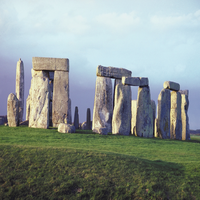
One of the most amazing monuments in England is Stonehenge. These days most people cannot enter it, but when I first saw it as a teenager in the early 1970s you could still go inside, and it was one of the places that I was taught to dowse. The power of the place has undoubtedly risen with its fame and mystery, but the fact remains that most sensitive people are quite strongly affected by it.
Some of the stones were probably brought from South Wales and the entire Stonehenge complex was built in several construction phases spanning
about 2,000 years, although there is evidence for activity both before and
afterwards on the site. There was a wooden henge of the site long before the stones arrived.
The BBC is reporting that archaeologists have discovered a huge ancient settlement used by some of the people who built Stonehenge.
Excavations at Durrington Walls have uncovered remains of ancient houses. People seem to have occupied the sites seasonally, using them for ritual feasting and funeral ceremonies.
It is thought that in ancient times, this settlement would have housed hundreds of people, making it the largest Neolithic village ever found in Britain. The dwellings date back to 2,600-2,500 BC – according to the researchers, the same period that Stonehenge was being built or re-built.
Mike Parker Pearson from the University of Sheffield, said, “In what were houses, we have excavated the outlines on the floors of box beds and wooden dressers or cupboards.”
The researchers have excavated eight houses in total at Durrington. But they have identified many other probable dwellings using geophysical surveying equipment. They think there could have been at least one hundred houses, each measuring about 5m (16ft). They are square, made of timber, with a clay floor and central hearth. The archaeologists found 4,600-year-old rubbish covering the floors of the houses.
And archaeologists love rubbish!
The evidence suggest that Stonehenge drew Neolithic people from all over the region, who came for massive feasts in the midwinter where they consumed prodigious quantities of food. The bones were then tossed on the floors of the houses.
Durrington has its own henge made of wood, which is strikingly similar in layout to Stonehenge. It was discovered in 1967.
Both henges line up with events in the astronomical calendar – but not the same ones. Stonehenge is aligned with the midwinter solstice sunset, while Durrington’s timber circle is aligned with the midwinter solstice sunrise. So it would seem that they were complementary.
Stonehenge lies on an extraordinary system of ley lines that crisscross the British Isles, parts of Northern France and parts of China. The lines are usually dismissed as pseudoscience, and it is certainly sometimes difficult to follow what some writers have to say on the subject. There is also a small body of evidence that some people can sense these ley lines. For people who can, the sensation is much the same as feeling the acupuncture meridians of the body. This apparent similarity has lead some experts in Feng Shui to approach personal wellness in the same way that they recommend the placement of plants, mirrors and other objects. Both the body and the land are looked at like gardens that need to be cultivated.
With some people, where they live, how they lie in bed and where they are treated can all be affected by these lines. Others don’t seem to notice a thing. I was once treating a lawyer with insomnia, and things were not going well. Until she went on vacation to England and she was fine for a couple of weeks. On her return to the USA we just moved her bed and the problem was solved. I just wish that it were always that easy!
It took me a long time to be persuaded that what I and others felt at Stonehenge and along these lines was real and not just make believe. But now I am convinced. The Ancients knew something about the relationship of the land to their lives, and we are finally recovering some of that knowledge for ourselves.
Charles Tart's Library

If you are at all interested in altered states of consciousness, transpersonal psychology, parapsychology or spirituality, you will find a great many useful and interesting papers written by Professor Charles Tart.
I was smitten by his work when I read his classic book Altered States of Consciousness in 1969, and he reamins one of the most respected figures in these fields
I have followed his work closely ever since, and his library of free articles is a treasure trove containing papers written between 1963 and 2006.
Charlie is currently a Core Faculty Member at the Institute of Transpersonal Psychology in Palo Alto, California, a Senior Research Fellow of the Institute of Noetic Sciences in Sausalito, California, as well as Professor Emeritus of Psychology at the Davis campus of the University of California.
I would like to thank him and many publishers for making all this material freely available.
Science and Medicine at Your Fingertips
There is a very important initiative which will likely have far reaching consequences.
A number of organizations are creating a Public Library of Science (PLOS), which is a non profit organization of scientists and physicians who are committed to making the world’s scientific and medical literature a freely available public resource. The impressive Board of Directors includes the Nobel Prize winner Harold E. Varmus, Chairman of the Board, and President & Chief Executive, Memorial Sloan-Kettering Cancer Center in New York; Patrick O. Brown
, Stanford University School of Medicine and the Howard Hughes Medical Institute and Michael Eisen, Lawrence Berkeley National Laboratory University of California at Berkeley.
Some of the journals that are relevant to Health, Integrated Medicine, Meaning and Purpose are in the "journals" section in the side bar on the left.
Let me explain why this is so important. Since the early days of science, most of what has been written has been hard to get at and therefore often open to misunderstanding and misquotation. Books – including textbooks – are full of errors that have been repeated from one to another, in most cases simply because the authors did not bother to check their sources. There’s a good example in popular literature. Book after book has repeated the story of the Hundredth Monkey. According to the story, Japanese scientists in the 1950s discovered that when a hundred monkeys learned a new task, monkeys elsewhere – without any physical means of contact – suddenly and spontaneously learned the same thing. The idea was that once the global monkey mind learned something, then the information was available to monkeys everywhere.
A number of years ago I looked at all the original research papers, copies of which are lodged in the Senate House Library in the University of London. The papers showed that the whole thing was untrue! There is a short piece about the hoax here.
If the papers had all been openly available, this urban legend would never have been able to take root.
Our next task will be to show people without a strong scientific background how to go about reading a paper: it is not as simple as it may seem, but is a learned skill. So almost anybody can be shown how to do it.
This is a terrific step toward greater freedom of information and everyone involved deserves our thanks.







